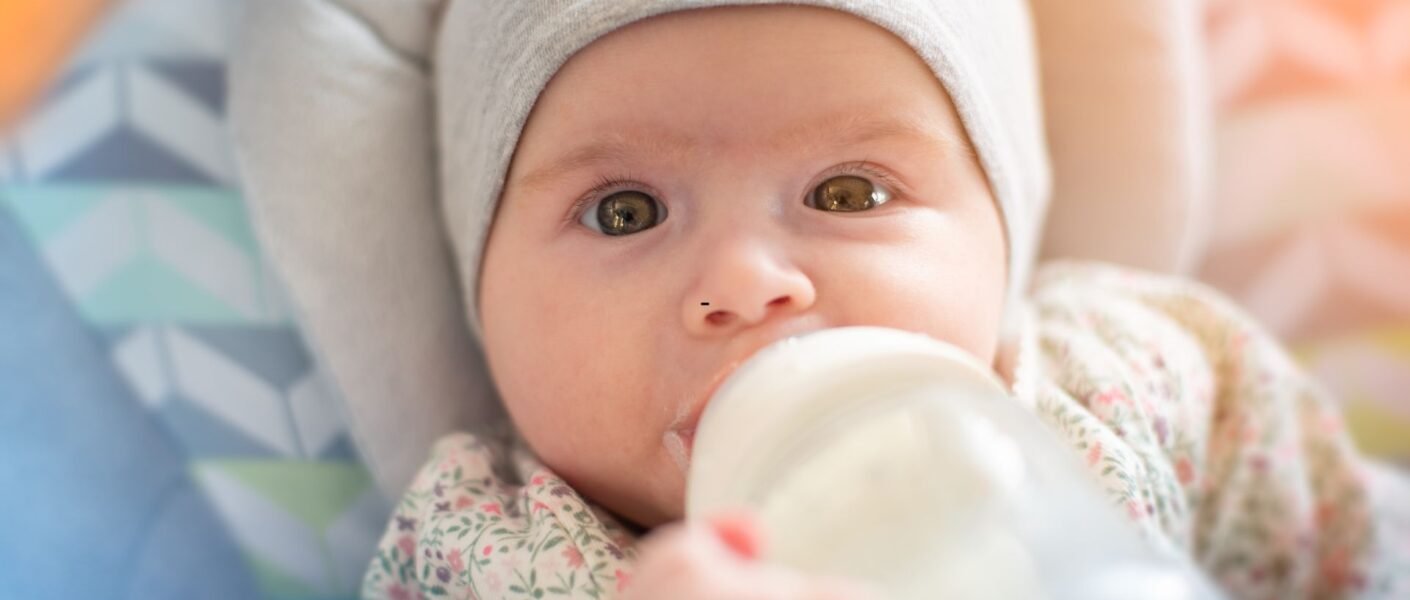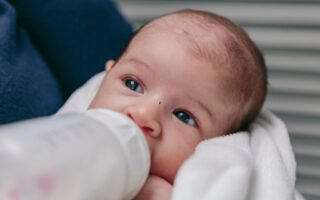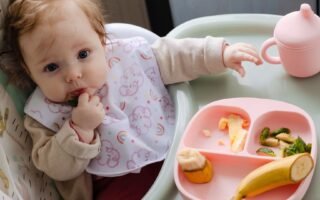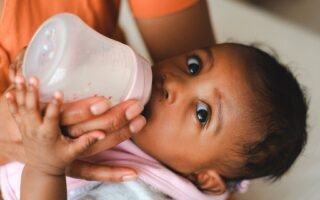Choosing to formula feed your baby is a personal decision, and ensuring that you prepare the formula correctly is crucial for their health and well-being. Improperly prepared formula can lead to nutritional deficiencies, digestive issues, and even serious infections. This comprehensive guide will walk you through the essential steps of preparing formula safely and accurately, empowering you to provide your baby with the nourishment they need to thrive.
Why Correct Formula Preparation Matters
Infant formula is designed to mimic the nutritional composition of breast milk, providing babies with the necessary vitamins, minerals, and calories for healthy growth and development. However, unlike breast milk, formula requires careful preparation to ensure it is safe and nutritionally balanced.
Incorrect formula preparation can have several negative consequences:
- Nutritional Imbalance: Using too much water can dilute the formula, reducing the concentration of essential nutrients. Conversely, using too little water can lead to dehydration and digestive problems.
- Increased Risk of Infection: Powdered formula is not sterile and can contain bacteria that can cause illness, especially in young infants. Proper sterilization and hygiene are essential to minimize this risk.
- Digestive Issues: Incorrect mixing or using the wrong type of water can lead to gas, constipation, or diarrhea.
- Failure to Thrive: Consistently providing improperly prepared formula can hinder your baby’s growth and development.
Step-by-Step Guide to Preparing Formula Safely
Follow these steps carefully to ensure you are preparing formula correctly:
1. Gather Your Supplies:
- Infant Formula: Choose a formula that is appropriate for your baby’s age and needs. Consult with your pediatrician if you have any questions about which formula to select.
- Clean Bottles and Nipples: Use bottles and nipples that have been thoroughly cleaned and sterilized.
- Water: Use safe water for mixing the formula.
- Measuring Spoons: Use the measuring spoon that comes with the formula container. Do not use household spoons, as they may not be accurate.
- Clean Work Surface: Ensure your countertop or work surface is clean.
2. Sterilize Bottles and Nipples (Especially for Newborns):
- Boiling: The most common method is to boil bottles and nipples in water for 5 minutes. Ensure all parts are completely submerged.
- Dishwasher: Some bottles and nipples are dishwasher safe. Check the manufacturer’s instructions.
- Electric Steam Sterilizer: These sterilizers are convenient and effective. Follow the manufacturer’s instructions.
3. Wash Your Hands Thoroughly:
- Wash your hands with soap and water for at least 20 seconds before preparing the formula.
4. Check the Formula Expiration Date:
- Ensure the formula has not expired. Do not use formula past its expiration date.
5. Read the Formula Instructions Carefully:
- Pay close attention to the instructions on the formula container. Different formulas may have slightly different mixing ratios.
6. Use the Correct Water-to-Formula Ratio:
- The standard ratio is usually 2 ounces of water per scoop of powdered formula. Always use the measuring spoon that comes with the formula container.
- Use the exact amount of water specified. Do not add extra water to stretch the formula.
7. Add the Water to the Bottle:
- Pour the correct amount of water into the sterilized bottle.
8. Add the Formula to the Bottle:
- Use the measuring spoon to scoop the correct amount of powdered formula. Level off the scoop with a clean, dry knife or the leveling device on the formula container.
- Add the formula to the bottle.
9. Mix the Formula Thoroughly:
- Tightly cap the bottle and shake well until the formula is completely dissolved.
10. Check the Temperature:
- Test the temperature of the formula by placing a few drops on your wrist. It should feel lukewarm, not hot.
11. Feed Your Baby:
- Feed your baby immediately after preparing the formula.
Choosing the Right Water
The type of water you use to prepare formula is crucial for your baby’s health.
- Tap Water:
- If your tap water is safe to drink, you can use it to prepare formula. However, it is essential to boil the water for 1 minute and then let it cool to lukewarm before mixing it with the formula, especially for babies younger than 3 months.
- If you are concerned about the quality of your tap water, consider using filtered water.
- Bottled Water:
- Use bottled water that is labeled as safe for infant formula preparation.
- Check the label to ensure it is low in fluoride.
- Distilled Water:
- Distilled water is purified and free of contaminants, making it a safe option for preparing formula.
- However, distilled water lacks minerals, so it is not recommended for long-term use without consulting with your pediatrician.
Water Temperature: Hot or Cold?
- Warm Water: Warm water helps the formula dissolve more easily. However, it is important to let the boiled water cool to lukewarm before mixing it with the formula to avoid damaging the nutrients.
- Cold Water: Cold water can also be used to prepare formula, but it may take longer for the formula to dissolve completely.
Tips for Safe and Hygienic Formula Feeding
- Always Wash Your Hands: Wash your hands thoroughly before preparing formula and feeding your baby.
- Sterilize Equipment: Sterilize bottles, nipples, and other feeding equipment regularly, especially for newborns.
- Prepare Formula Fresh: Prepare formula fresh for each feeding. Do not prepare large batches of formula in advance.
- Discard Leftover Formula: Discard any leftover formula after each feeding. Do not save leftover formula for later.
- Store Formula Properly: Store opened containers of powdered formula in a cool, dry place with the lid tightly closed.
- Use Formula Within the Recommended Timeframe: Use the formula within the timeframe recommended on the container.
- Never Heat Formula in the Microwave: Microwaving formula can create hot spots that can burn your baby’s mouth.
Common Mistakes to Avoid
- Using the Wrong Water-to-Formula Ratio: This is one of the most common mistakes. Always follow the instructions on the formula container carefully.
- Using Household Spoons to Measure Formula: Household spoons are not accurate and can lead to incorrect mixing ratios.
- Not Sterilizing Bottles and Nipples: Sterilization is essential to kill bacteria that can cause illness.
- Preparing Formula in Advance: Preparing formula in advance increases the risk of bacterial contamination.
- Heating Formula in the Microwave: Microwaving formula can create hot spots that can burn your baby’s mouth.
- Saving Leftover Formula: Saving leftover formula increases the risk of bacterial contamination.
When to Consult with Your Pediatrician
Consult with your pediatrician if you have any questions or concerns about formula feeding, including:
- Choosing the right formula for your baby.
- Preparing formula correctly.
- Your baby is experiencing digestive issues, such as gas, constipation, or diarrhea.
- Your baby is not gaining weight properly.
- Your baby has any allergies or sensitivities.
Conclusion
Preparing formula correctly is essential for your baby’s health and well-being. By following the steps outlined in this guide and practicing good hygiene, you can provide your baby with safe and nutritious formula feedings. Remember to consult with your pediatrician if you have any questions or concerns. With proper preparation and care, formula feeding can be a safe and effective way to nourish your baby and support their healthy growth and development.
I’m Cris Coelho, and motherhood has transformed my life!
As a speech therapist and early childhood educator, I’ve always been passionate about child development. But it was becoming a mother that truly opened my eyes to the real challenges and joys of this journey.
Here at Materníssima, I share everything I’ve learned — blending professional knowledge, real-life experience, and a heartfelt touch.
You’re very welcome here! 💕









